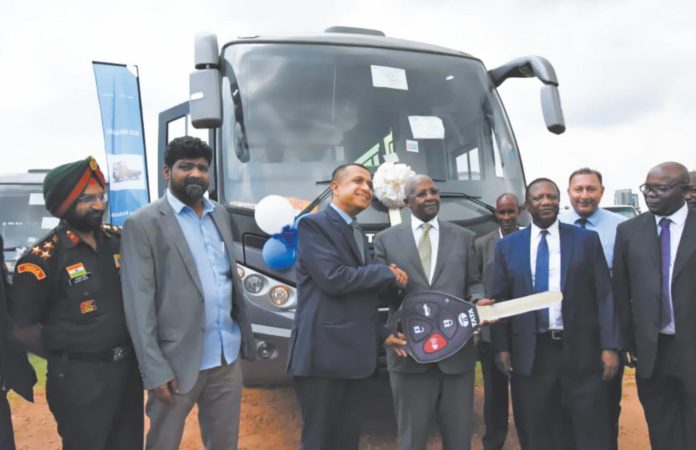Underlining the potential for robust defence cooperation between India and Bangladesh, foreign secretary Harsh Vardhan Shringla said on 2 March, India was ready to share with Bangladesh any military hardware being manufactured in the country for India’s defence forces.
Shringla, a former Indian High Commissioner to Dhaka, was in Bangladesh on his first visit to the country. He was addressing a seminar at the Bangladesh Institute for International Studies (BIISS)., Shringla said Bangladesh has become India’s largest development partner in the world and India’s largest trade partner in the region.
Shringla said India also welcomes the opportunity for Indian officers to train at premier military institutions of Bangladesh, just as the Indian side is ready to open military training institutes at all levels – from officer cadet training to specialised higher command training – to Bangladesh.
India’s advanced air defence system AKASH has great potential for export to friendly countries.
Logistics Bases
Hindustan Aeronautics Ltd (HAL) is looking at setting up logistics bases in Malaysia, Vietnam, Indonesia and Sri Lanka as part of initiatives to woo the countries to buy India’s light combat aircraft Tejas and military helicopters.
Chairman and Managing Director of HAL R Madhavan said, on 9 March, that the HAL was considering to build logistics bases in the four countries as they use a number of Russian-origin military aircraft and choppers whose serviceability is “very poor”. He said the HAL is now seriously focusing on boosting exports in sync with the government’s priority and identified South East Asia, West Asia and North Africa to sell key platforms like Tejas, attack helicopter Rudra and advanced light helicopter Dhruv.
Without divulging details, Madhavan said a number of countries in West Asia are also in touch with the HAL for possible procurement of its key products.
The combat jets are classified under various generations depending on their avionics, capability and weapons systems. The current fleet of fighter jets with the IAF range from three-and-half generation to the fourth generation.
South Korea
A Roadmap for Defence Industries Cooperation between the Republic of India and the Republic of Korea (ROK) was exchanged during a bilateral meeting between defence minister Rajnath Singh and Republic of Korea (ROK) defence minister Jeong Kyeong-Doo, on 4 February 2020.
This Roadmap lists a number of possible areas of cooperation in land systems, naval systems, aero systems, guided weapon systems including research and development cooperation, collaboration regarding testing, certification and quality assurance. The roadmap aims to facilitate defence industries in participation and collaboration on Make in India initiatives of Government of India.
This Roadmap also aims to promote investment and technology transfer in Defence Industrial Corridors in Uttar Pradesh and Tamil Nadu.
ROK companies wishing to invest in India are envisaged to receive support from both Defence Investor Cell and Korea Plus Centre. Several Indian companies are involved in the manufacturing of various defence spare parts in India.
Uganda
Ugandan & Indian officials at the handover event. In the background is the fleet gifted
Uganda has received a fleet of eighty eight (88) motor vehicles including executive buses, ambulances, water trucks and utility lorries donated by the government of India. The fleet also includes a consignment of 44 military trucks to be used by the national army, Uganda People’s Defence Forces (UPDF).
The vehicles were officially handed over, on 3 March, by the Indian high commissioner to Uganda to Uganda’s minister of foreign affairs.
The donation is a follow-up of pledges made by the Prime Minister of India, Narendra Modi during his official visit to Uganda in July 2018. The visit was part of a wider African tour aimed at deepening India’s ties with Africa.
Nepal
Nepal is working with Russia on payment options for an unspecified number Mi-17 V-5 helicopters, as dollar transactions have been made difficult by US sanctions against Russia. Russia has switched over to payments in national currencies with countries such as India, China and Indonesia as sanctioned Russian entities cannot use the SWIFT international payments system.
The payment in dollars could be made through China or India.


















